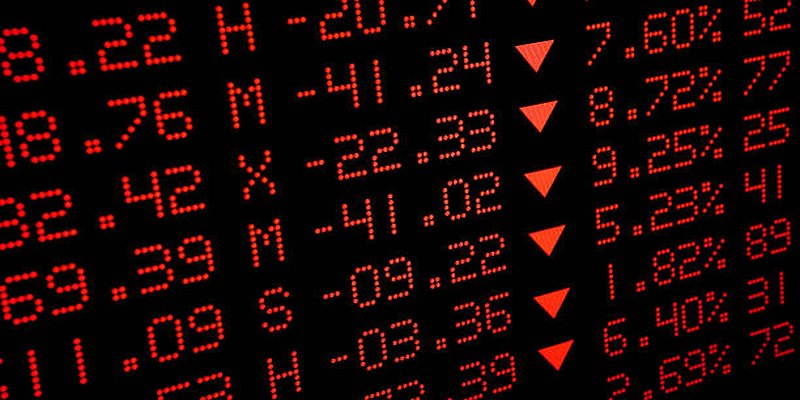Causes and Consequences: Analyzing the 1929 Stock Market Crash
Oct 03, 2024 By Susan Kelly
The 1929 Stock Market Crash, often referred to as Black Tuesday, marked a pivotal and devastating turning point in global economic history. Triggered by a multitude of factors, including speculative investment practices and a lack of financial regulations, the crash led to a dramatic collapse in stock prices. This catastrophic event not only wiped out billions of dollars of wealth but also set the stage for the Great Depression, a period of widespread economic hardship and unemployment that lasted for over a decade. The repercussions of the crash were felt far beyond the confines of the financial world, influencing social and political landscapes across the globe. Understanding the causes and consequences of the 1929 Stock Market Crash offers invaluable insights into the complexities of economic systems and the importance of regulatory measures.
Economic Conditions Before the Crash

Before the 1929 Stock Market Crash, the United States was experiencing a period of remarkable economic growth and apparent prosperity, often referred to as the Roaring Twenties. Industrial production surged, and technological advancements, such as the widespread adoption of automobiles and radios, fueled consumer demand and economic expansion. The stock market reflected this optimism, with stock prices soaring and an increasing number of Americans investing in the market, often with borrowed money. However, beneath this veneer of prosperity, there were underlying economic weaknesses.
High levels of consumer debt, uneven wealth distribution, and an overreliance on credit rendered the economy fragile. Agricultural sectors, in particular, struggled due to low crop prices and mounting debts. These factors collectively created an economic environment prone to instability, setting the stage for the catastrophic crash that would soon follow.
The Crash and its Aftermath
On October 24, 1929, stock prices began to plummet, triggering a mass sell-off that soon spiraled out of control. Panic ensued as investors frantically tried to liquidate their assets, causing stock prices to fall even further. By the end of October, stock prices had dropped by over 23%, marking the beginning of a downward spiral that lasted for years. In just four days, investors lost an estimated $30 billion in paper values.
The crash had serious consequences on individuals and institutions alike. Banks collapsed, businesses went bankrupt, and millions lost their jobs as unemployment rates climbed to unprecedented levels. Consumer spending declined drastically, leading to a downward spiral of economic activity that further exacerbated the crisis. The collapse of the stock market also had a ripple effect on global markets, triggering a financial contagion that spread to other countries and contributed to a worldwide economic downturn.
Causes of the 1929 Stock Market Crash
Speculative Investment Practices
One of the primary causes of the 1929 Stock Market Crash was the rampant speculation that had taken hold of the market throughout the 1920s. Investors, driven by the prospect of quick and substantial gains, engaged in speculative investment practices, often buying stocks on margin. This meant that they borrowed money to purchase stocks. However, this speculative bubble created an unstable financial environment, as stock prices were driven to artificially high levels without corresponding increases in the fundamental value of the companies.
Lack of Financial Regulations
The period leading up to the crash was marked by a significant lack of financial regulations and oversight. The stock market operated with minimal governmental intervention, allowing for risky and often unscrupulous trading practices. Insider trading, market manipulation, and the proliferation of unregulated investment trusts created an environment ripe for financial disaster. Without regulatory frameworks in place to curb excessive risk-taking and to monitor the integrity of the market, the stage was set for a financial collapse.
Overproduction and Declining Wages
Although industrial production surged during the Roaring Twenties, this growth was not matched by a corresponding increase in wages for the average worker. Many industries, particularly in manufacturing, produced goods at unprecedented rates, but the purchasing power of the majority of American consumers did not keep pace. This led to overproduction, as goods piled up in warehouses with insufficient demand to clear them. The resulting economic imbalance weakened the foundations of the economy, making it more susceptible to shocks.
Agricultural Sector Weaknesses
The agricultural sector faced significant challenges during the 1920s, including declining crop prices and mounting debt among farmers. Despite technological advancements that increased agricultural productivity, the prices of agricultural products fell, leaving many farmers unable to repay their loans. The rural economy suffered greatly, and widespread farm foreclosures became a common occurrence. The fragility of the agricultural sector added to the overall vulnerability of the American economy.
Uneven Wealth Distribution
The economic prosperity of the 1920s was unevenly distributed, with the rich getting richer while a significant portion of the population remained economically disadvantaged. This inequality meant that a large segment of the population did not have sufficient income to sustain long-term economic growth. Concentrating wealth among a small elite led to reduced aggregate demand and heightened economic instability.
International Economic Issues
The global economy also played a role in the lead-up to the crash. Many European countries were still recovering from the devastation of World War I, and their economic instability affected the United States. International trade imbalances and repayment issues concerning war debts and reparations further strained the global financial system. As global economic conditions deteriorated, they contributed to the loss of confidence and the eventual collapse of the stock market.
Lessons Learned and Reforms Implemented

The Great Crash of 1929 had long-lasting effects on the American economy, leading to significant changes in financial regulations and government policies. The Federal Reserve implemented stricter monetary policies, increasing interest rates to curb excessive speculation. The Securities Act of 1933 and the Securities Exchange Act of 1934 were also passed to regulate trading practices and provide greater transparency in the stock market.
Additionally, President Franklin D. Roosevelt's New Deal programs aimed at providing relief, recovery, and reform helped stabilize the economy and restore public confidence. Government intervention in the form of increased spending, social welfare programs, and infrastructure development played a crucial role in reviving economic activity. These reforms not only helped the United States recover from the Great Depression but also laid the foundation for a more stable financial system.
Conclusion
The 1929 Stock Market Crash was a pivotal event in American history that had far-reaching repercussions. It exposed weaknesses and imbalances in the economy and led to significant changes in government policies and regulations. The lessons learned from this crisis continue to shape financial practices and policies today, serving as a reminder of the dangers of unbridled speculation and the importance of responsible economic management. So, it is imperative for governments to maintain strict regulatory frameworks to prevent another catastrophic crash like that of 1929. By learning from past mistakes, we can strive towards creating a more stable and equitable economy for all.

Banking
Understanding Term Life Insurance
Discover how to find the right term life insurance policy with ease. Learn about different options and how to navigate the process effectively.
Learn More
Banking
2024 Home Improvement Loans: Top Picks for Your Renovation Projects
Looking for the best home improvement loans in 2024? Explore top options for affordable financing that can help you create your dream home
Learn More
Investment
Options vs. stocks: Which one is better for you?
Compare options and stocks, highlighting the differences in risk, potential returns, and suitable strategies for each type of investment.
Learn More
FinTech
BofA Launches CashPro® Insights
Bank of America enhances CashPro with advanced data analytics, empowering businesses to optimize cash management and make smarter financial decisions.
Learn More
Business
Enhance Credit Risk Management with Effective Advanced Assessments
This article discusses how organizations can build confidence in their credit risk strategies by using advanced assessments. Learn how credit risk management has evolved, explore the significance of key components like the Probability of Default (PD) and Loss Given Default (LGD), and understand how tools like the CAMEL rating system and modern credit models contribute to better risk management.
Learn More
Banking
Understanding Covenants: Types, Stories, and Moral Considerations
Explore covenants: from definition to examples. Learn types, violations, and real-life significance of these agreements.
Learn More